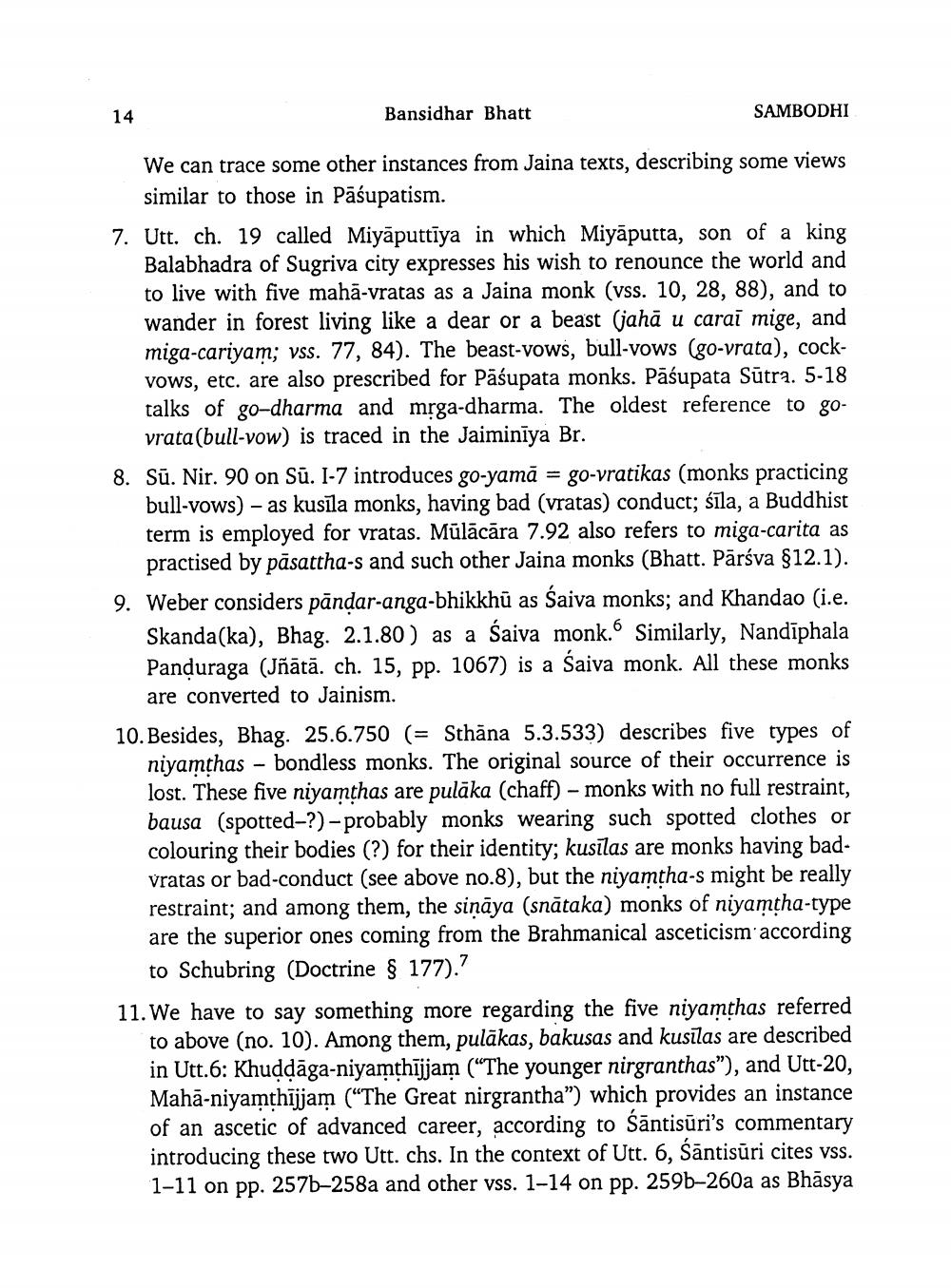________________
14
Bansidhar Bhatt
SAMBODHI
We can trace some other instances from Jaina texts, describing some views
similar to those in Pāśupatism. 7. Utt. ch. 19 called Miyāputtīya in which Miyāputta, son of a king
Balabhadra of Sugriva city expresses his wish to renounce the world and to live with five mahā-vratas as a Jaina monk (vss. 10, 28, 88), and to wander in forest living like a dear or a beast (jahā u carai mige, and miga-cariyam; vss. 77, 84). The beast-vows, bull-vows (go-vrata), cockvows, etc. are also prescribed for Pāśupata monks. Pāśupata Sūtra. 5-18 talks of go-dharma and mrga-dharma. The oldest reference to go
vrata(bull-vow) is traced in the Jaiminiya Br. 8. Sū. Nir. 90 on Sū. 1-7 introduces go-yamā = go-vratikas (monks practicing
bull-vows) - as kusila monks, having bad (vratas) conduct; śīla, a Buddhist term is employed for vratas. Mūlācāra 7.92 also refers to miga-carita as
practised by päsattha-s and such other Jaina monks (Bhatt. Pārsva 312.1). 9. Weber considers pāndar-anga-bhikkhū as Saiva monks; and Khandao (i.e.
Skanda(ka), Bhag. 2.1.80) as a Saiva monk. Similarly, Nandīphala Panduraga (Jñātā. ch. 15, pp. 1067) is a saiva monk. All these monks
are converted to Jainism. 10. Besides, Bhag. 25.6.750 (= Sthāna 5.3.533) describes five types of
niyamthas - bondless monks. The original source of their occurrence is lost. These five niyamthas are pulāka (chaff) - monks with no full restraint, bausa (spotted-?)-probably monks wearing such spotted clothes or colouring their bodies (?) for their identity; kusīlas are monks having badvratas or bad-conduct (see above no.8), but the niyamtha-s might be really restraint; and among them, the sināya (snātaka) monks of niyamtha-type are the superior ones coming from the Brahmanical asceticism'according
to Schubring (Doctrine § 177).? 11. We have to say something more regarding the five niyamthas referred
to above (no. 10). Among them, pulākas, bakusas and kusīlas are described in Utt.6: Khuddäga-niyamthījjam (“The younger nirgranthas”), and Utt-20, Mahā-niyamthījjam (“The Great nirgrantha") which provides an instance of an ascetic of advanced career, according to Sāntisūri's commentary introducing these two Utt. chs. In the context of Utt. 6, Sāntisūri cites vss. 1-11 on pp. 257b-258a and other vs. 1-14 on pp. 259b-260a as Bhāsya




